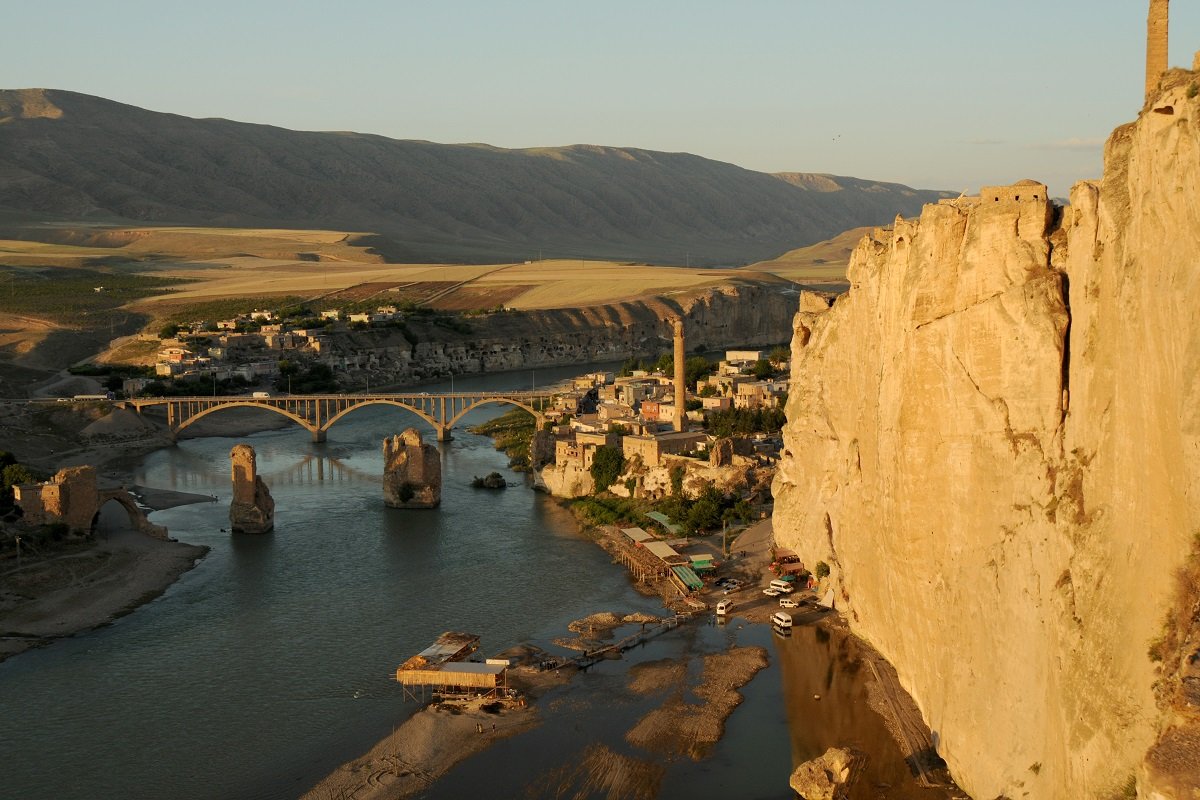
Libertarian Lawyers Platform (ÖHP) has filed a criminal complaint with the Batman Chief Prosecutor’s Office against those who are responsible for making rocks fall with dynamite as part of the Ilısu Dam and Hydroelectric Power Plants (HES) Project that will submerge ancient town of Hasankeyf in Turkey’s southeastern province of Batman. The ÖHP called for the preventative measures to be taken immediately, according to a report by Bianet on Thursday.
Despite all the objections, rocks are still tumbling down from the castles as part of the Ilısu Dam and Dams and Hydroelectric Power Plant (HES) Project that will submerge Hasankeyf, an ancient town and district located along the Tigris River in the predominantly Kurdish-populated Batman Province in southeastern Turkey.
The Initiative to Keep Hasankeyf Alive has stated that the rocks that do not pose a threat or pose little risk were being tumbled down as well with dynamite-like explosives that harm the natural structure of the castle. The initiative also has posted a video about the matter.
A delegation of five people consisting of construction engineers, geological engineers and architects made an inspection at the site on August 16, 2017 Chamber of Civil Engineers Batman Branch Director Ferhat Demir from the delegation has stated that “As far as we observed, the caves below and wine cellars have been damaged due to the destruction. The entrances of the caves have been closed. If the rocks posed a threat, it should have been fixed through appropriate methods. An arbitrary demolition is inappropriate.”
However, Batman Governor Ahmet Deniz on the other hand had shared another video claiming that “It is absolutely not true that dynamite is being used during removal of the rocks which pose threat in Hasankeyf.”
Civilized life in the antique town of Hasankeyf dates back to 8th century B.C. and the drawings inside the caves scattered around the town shed light on different periods, cultures and architectures of humanity. It is home to evidences on the roots of human species, the beginning of agriculture, and the beginning of civilization. The nearly 6 thousand caves around the antique town are one of the first sites of human settlement.
With its history and nature, Hasankeyf fulfills 9 of the 10 UNESCO criteria to be protected as human heritage. Hasankeyf also possesses one of the richest treasures of Islamic monuments. Sitting on the banks of the River Tigris, the antique town is one of the most important architectural and archaeological sites of the world, boasting a rich biodiversity and 12,000 years of human history. Masterpieces of Islamic architecture, dating from the 12th to 15th centuries C.E., make the town one of the best preserved witnesses to Seljuk urban culture, particularly from the Artukid and Ayyubid dynasties.
A small town with a great heritage, Hasankeyf already attracts about 500.000 visitors each year, a number expected to rise. Given its historical, architectural and economic significance for the region, public opinion supports its preservation. The area was declared a First Degree Archaeological Site by Turkey’s Supreme Board of Monuments in 1978 and has been under the protection of the Culture Ministry’s General Directorate of Antiquities and Museums since 1981.
There are more than 300 archaeological sites within a 7 thousand hectares of land where the town settled. 83 of these sites are directly affected by the dam, and the others are susceptible to the dam’s erosion affect.
A video shared in social media among Turkish users show that some of the caves were dynamited during the construction of Ilısu dam which will flood Hasankeyf town.















